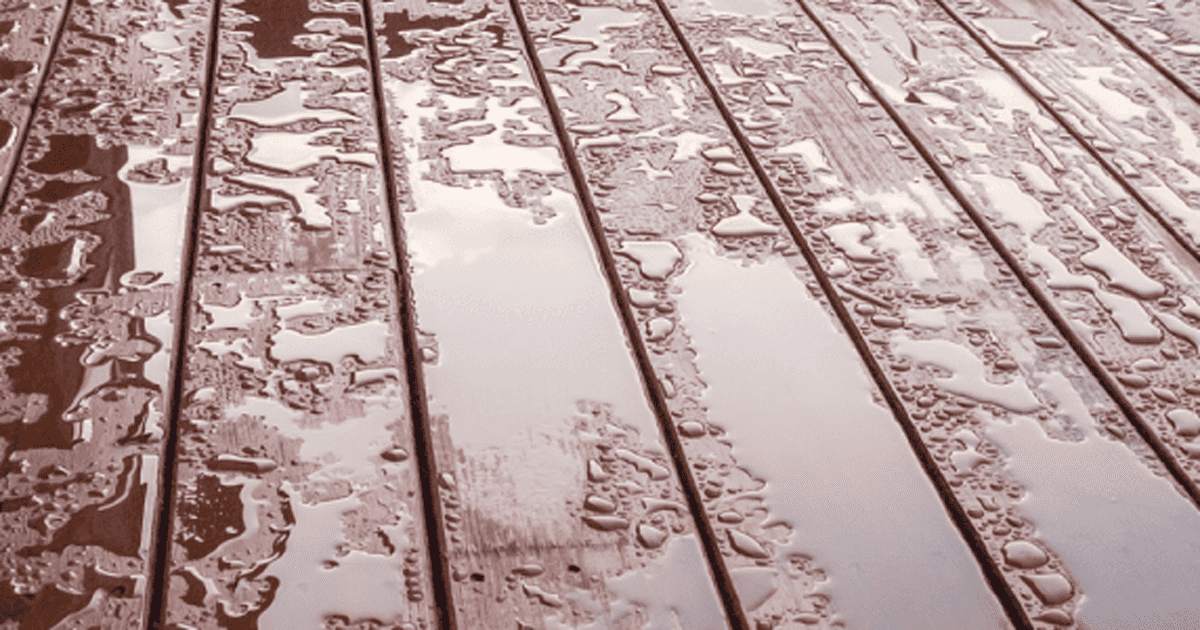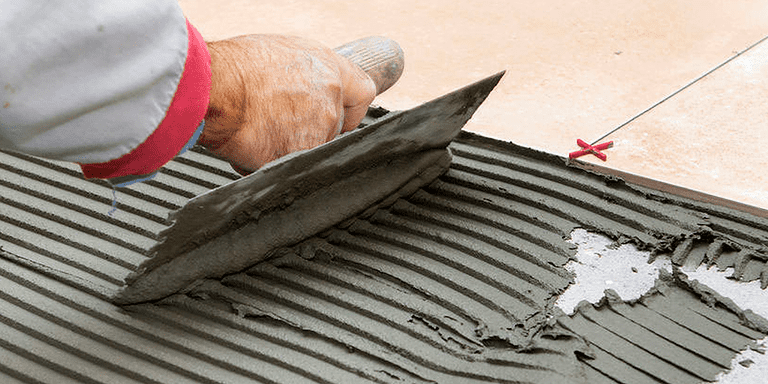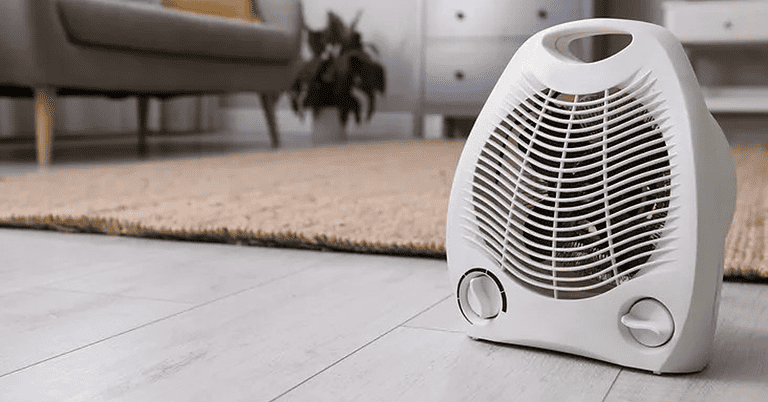Water Pooling on Composite Deck: How to Solve the Problem
Imagine stepping onto your composite deck after heavy rain, only to find yourself wading through pools of water. This is a common issue that many homeowners face with their outdoor living spaces. Water pooling on your composite deck can not only be an inconvenience but can also lead to damage over time if left unaddressed.
Luckily, there are solutions for fixing and preventing water retention on your composite deck. In this article, we will explore why water may pool on your deck surface and provide practical steps for addressing the problem.
By protecting your composite deck from water damage, you can ensure that it remains a beautiful and functional space for years to come.
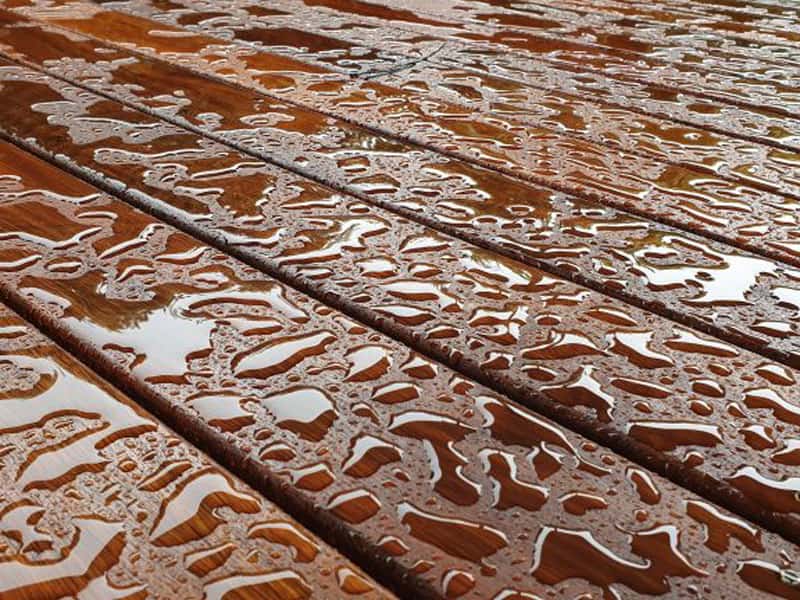
Why is Water Pooling on My Composite Deck?
Are you experiencing water pooling on your composite deck? This could be due to a sloping or uneven deck surface, inadequate drainage system, short gap between deck boards, or improper joist spacing. It could also be because of warped/cupped deck boards.
To solve this problem, consider creating a slope or addressing surface tension. You can also add gaps for drainage, improve the drainage system, adjust the joist spacing, or replace any warped/cupped boards.
These solutions allow you to enjoy your composite deck without worrying about water pooling.
1. Sloping or Uneven Deck Surface
If you’re noticing water pooling on your composite deck, don’t panic – one possible solution is to create a slight slope or address surface tension to prevent the issue from persisting.
Standing water on decking can lead to warping and sagging, so ensuring adequate drainage is essential. One option is to add gaps between the boards for better water flow. Another solution is to install a drainage system underneath your ground-level deck. If you choose this route, make sure that the system has enough capacity and that it’s installed correctly.
A slight gradient in the surface of your deck can also help with water runoff. In any case, addressing the issue of water pooling as soon as possible can help prevent more significant damage.
Moving on to our next section, let’s look at what happens when an inadequate drainage system is in place. (Learn How Long Does It Take For Grass To Dry)
2. Inadequate Drainage System
Congratulations, you’ve built a beautiful deck that’s the perfect spot for relaxing and entertaining – but have you considered the possibility of a flawed drainage system wreaking havoc on your outdoor oasis?
If you’re experiencing water pooling on your deck, here are some tips to prevent standing water from damaging your new composite decking:
- Ensure your deck has adequate spacing between boards for proper water flow.
- Create a slope in your decking design to allow water to run off and drain away from the surface.
- Install a drainage system beneath your deck surface that redirects any excess water away from the area.
- Relocate any mats or rugs trapping moisture under them.
- Consider using different types of mats that allow water to drain through them instead of pooling on top.
Implementing these solutions prevents water damage and keeps your composite decking looking great for years.
Now let’s move on to addressing the short gap between deck boards…
3. Insufficient Gap Between Deck Boards
Don’t let a simple mistake ruin your perfect deck – avoid short gaps between boards. Various factors can cause water pooling on composite decks, and one of them is having a minimum gap between the ground and the decking surface. Following the manufacturer’s guidelines for screw spacing and expansion gaps during installation is crucial to prevent this issue. For example, TimberTech decking recommends a minimum interval of 6mm (1/4 inch) between board edges for drainage and ventilation purposes. Failing to do so can lead to moisture damage, rotting, and warping of the deck boards over time. Check out the table below for tips on preventing water pooling caused by short gaps.
| Tips for Preventing Water Pooling |
|---|
| Follow the manufacturer’s guidelines for screw spacing and expansion gaps |
| Use pedestals or shims to elevate low spots in the substructure |
| Relocate mats that trap water underneath |
| Create a slope with joists or install an under-deck drainage system |
| Consider using capped composite deck boards that have superior moisture resistance |
Now let’s move on to another common cause of water pooling – improper joist spacing.
4. Improper Joist Spacing
Improper spacing between joists can lead to an unsafe deck that’s difficult to walk on and can cause damage over time. When the posts are too far apart, the decking boards don’t have enough support, causing them to sag and create dips in the surface. This can also cause water to pool underneath the deck surface, leading to moisture buildup and potential hazards.
It’s crucial to ensure proper spacing between joists according to manufacturer guidelines, typically 300-400 mm or 12-16 inches apart, depending on the board width. This allows for the expansion and contraction of the boards while also providing adequate support. Installing additional cross beams or double bearers can also help distribute weight more evenly across the underside of the deck surface.
Without addressing this issue first, other solutions, such as fixing warped or cupped deck boards, will be ineffective in solving the problem of water pooling.
5. Warped or Cupped Deck Boards
Addressing warped or cupped deck boards is essential for maintaining the safety and longevity of your outdoor living space. Warping can occur due to improper installation, lack of ventilation, or exposure to rainwater and other elements. Here are some tips on how to address this issue:
- Check with your supplier if you notice any defects in the board material.
- Stain or paint wooden boards regularly to prevent erosion.
- Use a polymer decking material that’s less prone to warping and cupping.
- Consider using a groove and membrane system that allows water to flow through instead of pooling on top.
Addressing these issues ensures that your substructure remains intact and your deck remains stable for years.
The following section discusses how to fix water pooling on your composite deck without causing further damage or compromising its integrity.
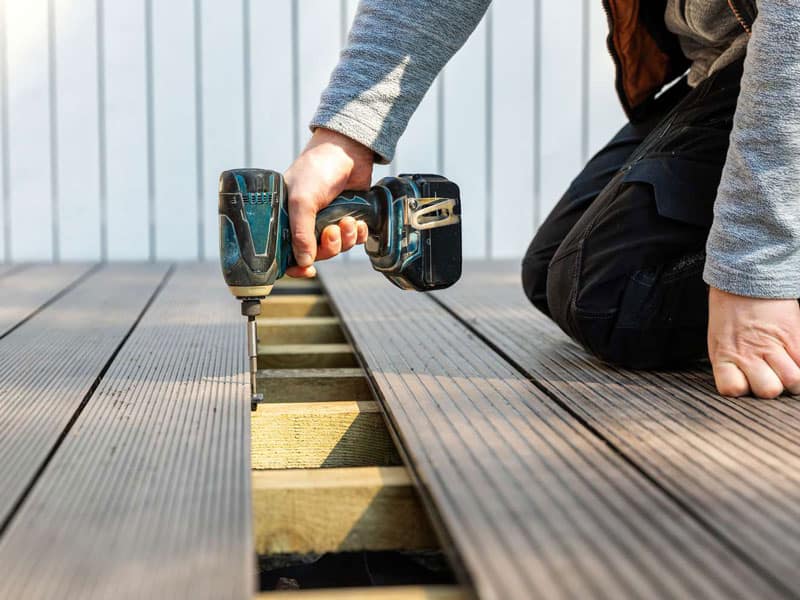
How to Fix Water Pooling on Your Composite Deck
If you’re dealing with water pooling on your composite deck, there are several solutions you can try.
First, check the slope or level of your deck to ensure it’s not contributing to the problem.
Next, improve the drainage system by adding gaps for water flow and relocating mats that may trap moisture.
Increase the gap between deck boards and check and correct joist spacing as necessary.
Finally, replace any warped or cupped deck boards that may be causing water to pool.
1. Check the Slope or Level of Your Deck
To ensure proper drainage and prevent water pooling on your composite deck, take a moment to check the slope or level of your deck using a simple tool like a bubble level; this will help you avoid a potential flood waiting to happen and keep your outdoor space as dry as a bone. A properly sloped deck should have at least a 1/8 inch slope per foot away from your house. If your composite deck is not sloping enough, you can adjust it by adding shims under the joists or adjusting the height of the posts. Additionally, ensure adequate airflow under the decking by leaving gaps between boards and ensuring that furniture or mats are not blocking those gaps. Lastly, if you notice any puddles forming on your deck after rain, consult a builder to determine if any structural issues are causing water retention. By addressing these factors, you can solve the problem of water pooling on your composite deck and enjoy a dry outdoor space for years. Moving forward into the next section about improving the drainage system…
2. Improve the Drainage System
These steps improve your outdoor space by ensuring proper drainage on your composite deck. First, increase the airflow under the deck by installing a lattice or using a different type of mat for air circulation.
Second, add texture to the decking surface by using anti-slip additives or choosing a textured board to prevent standing water. Third, address any mildew or fungus growth with cleaning products specifically designed for composite decking.
Fourth, ensure correct screw placement at the center of each board to avoid warping and allow for proper expansion gaps. Finally, consider adding a drainage system such as troughs or gutters to direct water away from the deck area.
By improving your drainage system, you can solve the problem of water pooling on your composite deck and enjoy your outdoor space worry-free. To increase drainage efficiency, continue reading about expanding the gap between deck boards.
3. Increase the Gap Between Deck Boards
Maximize the lifespan of your composite deck and solve the problem of water pooling by increasing the gap between your deck boards. This simple solution allows for better drainage and improves airflow underfoot, preventing moisture from accumulating and causing warping or sagging.
We advise owners to consider using an accessory like a thicker spacer to ensure proper spacing between boards. Doing so can prevent water pooling on your deck and increase its longevity.
Once you’ve increased the gap between your composite deck boards, checking and correcting joist spacing is essential. This will ensure proper support for your decking material. (Learn How Long Do Roses Last In The Fridge)
4. Check and Correct Joist Spacing
You don’t want to risk the structural integrity of your composite deck, so it’s essential to check and correct joist spacing to prevent any potential issues down the line.
Water pooling on a composite deck can be caused by poor installation, including improper joist spacing. Building a solid foundation for your deck is crucial for preventing water retention and other problems that may arise during heavy rain or snowfall.
Deck owners should ensure they’ve followed the manufacturer’s guidelines for proper joist spacing, as this can affect water drainage and overall performance. By checking and correcting joist spacing, you can solve the problem of water pooling on your composite deck.
Now that you’ve addressed the issue’s root cause, let’s move on to replacing any warped or cupped deck boards that may have been affected by the pooling water.
5. Replace Warped or Cupped Deck Boards
Don’t let a warped or cupped deck board ruin the beauty and safety of your outdoor space. To solve the problem of water pooling on your composite deck, you may need to replace any warped or cupped deck boards. This will enable adequate drainage and prevent further damage to your decking.
When replacing the boards, make sure to use screws that are appropriate for composite decking and follow proper installation guidelines. Additionally, consider using a moisture-resistant product like TimberTech capped polymer or composite decking to reduce the risk of future warping or cupping.
These solutions allow you to maintain a beautiful, functional composite deck for years.
Transitioning into the next section, knowing how to protect your composite deck from water damage is essential.
How to Protect Your Composite Deck from Water Damage
If you want to protect your composite deck from water damage, there are several steps you can take.
First, ensure the installation is done correctly with proper ventilation and drainage.
Keep your deck clean and dry by regularly removing standing water or debris.
Apply a waterproofing solution to add an extra layer of protection.
Choose high-quality and capped composite deck boards for added durability.
If you’re unsure about the installation process or lack experience building decks, consider hiring a professional deck builder to ensure it’s done right.
1. Ensure Proper Installation
Ensuring proper installation is crucial in preventing water pooling on your composite deck, which can lead to costly repairs and a shorter lifespan for your deck. During installation, it’s essential to consider expansion gaps, ventilation, and airflow systems. Screws must be placed correctly, and double bearers should be used to avoid warping. Lack of ventilation and drainage gaps can also cause water pooling. If you’re building a deck in rain or wet conditions, ensure the substructure is dry before laying down the boards.
When cleaning your composite decking, remove any furniture or debris first using a soft mop or nylon bristle brush – avoid using harsh chemicals or jet washes as this can damage the surface of your deck. Additionally, recycling old materials is essential when possible; many companies offer free samples of their products made from recycled materials. Following these steps during installation and maintenance can prevent unsightly water pooling on your composite deck and keep it looking new for years. Keep your deck clean and dry by regularly mopping up any standing water or soaking up excess moisture with towels or mats before it has a chance to accumulate.
2. Keep Your Deck Clean and Dry
Keeping your composite deck clean and dry is essential now that you’ve ensured proper installation of your composite deck.
As mentioned earlier, water pooling can be caused by poor installation and lack of ventilation. However, standing water on the deck surface can cause problems over time even with proper installation.
Remove any furniture or debris before cleaning your deck to prevent this issue. Use a soft mop or nylon bristle brush to clean the surface, and avoid using harsh chemicals or jet washers that could damage the boards.
Drying the deck with a rubber or plastic squeegee, mop, or towel is also a good idea after removing standing water. By keeping your composite decking clean and dry, you’ll not only prevent water pooling but also extend its lifespan.
Now let’s move on to applying a waterproofing solution for added protection.
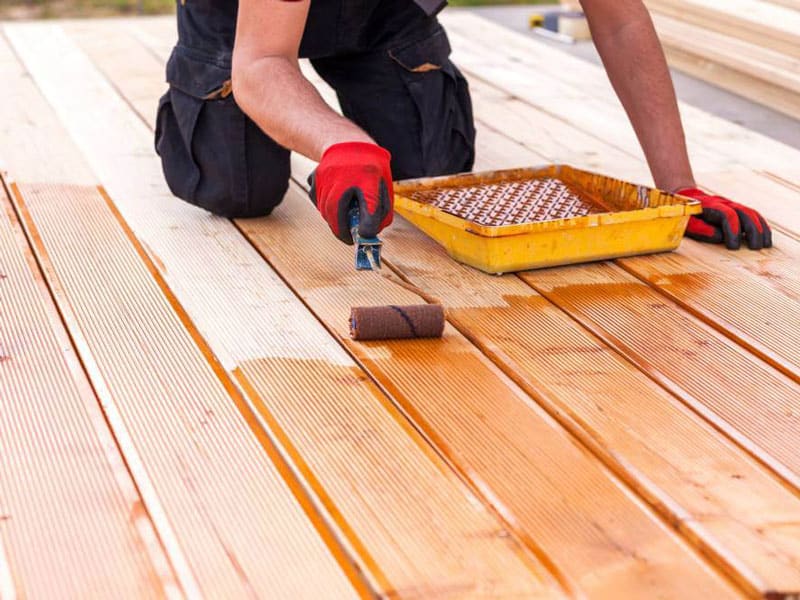
3. Apply a Waterproofing Solution
To protect your investment in composite decking, consider applying a waterproofing solution that protects against the elements, much like how sunscreen protects our skin from harmful UV rays.
Various types of waterproofing solutions are available on the market, including sealers and coatings that can be applied to the surface of the deck boards. These products provide an extra layer of protection against water damage and help prolong the lifespan of your composite decking.
However, it’s important to note that not all waterproofing solutions are created equal, so choose a product specifically designed for composite decks and follow the manufacturer’s instructions carefully.
Applying a high-quality waterproofing solution to your composite deck can prevent water pooling and ensure that it looks great for years to come. To take things one step further, consider choosing high-quality, capped composite deck boards for even more excellent protection against moisture intrusion.
4. Choose High-Quality and Capped Composite Deck Boards
For more excellent protection against moisture and prolonged lifespan, consider opting for high-quality, capped composite deck boards. These types of decking have proprietary capping technology made from 100% synthetic material, making them an ideal all-weather decking choice.
TimberTech decking boasts Alloy Armour Technology® in the cap of TimberTech AZEK® deck boards that delivers superior protection from moisture penetration. Additionally, TimberTech AZEK capped polymer decking is made from entirely synthetic material from core to cap, offering the highest level of moisture resistance. Mold Guard Technology® protects TimberTech PRO® composite decking by locking out moisture on all four sides of each board.
Choosing these deck boards can help prevent water pooling and other issues caused by poor installation or low-quality materials. Moving forward with this solution will ensure a more durable and long-lasting deck for years.
In the next section, we’ll discuss why hiring a professional deck builder for your project might be beneficial.
5. Hire a Professional Deck Builder
Hiring a professional deck builder can ensure that your outdoor living space is expertly designed and installed, reducing the risk of water pooling on your composite deck.
A skilled builder will consider important factors such as proper board spacing, ventilation, and drainage to prevent any issues with water retention. They will also have experience correctly installing joists and bearers to avoid the warping or sagging of the boards.
Additionally, they can guide maintenance and cleaning to keep your deck looking new for years. With the help of a professional, you can enjoy your outdoor space without worrying about water pooling or other potential problems.
Moving onto common questions about water pooling on composite decks. (Learn How To Connect Two Hoses Together)
Common Questions about Water Pooling on Composite Decks
If you’re wondering about the ideal gap between deck boards to prevent water pooling, if it’s okay to use a pressure washer on your composite deck, how to prevent mold and mildew from forming on your patio, or even if you can fix water damage on your composite deck – we’ve got answers.
This discussion will cover all these common questions, providing technical and precise solutions to help protect your composite deck from water damage. And the good news is that with proper installation and maintenance, composite decks typically don’t need to be sealed or stained.
Can I Use a Pressure Washer to Clean My Composite Deck?
Using a pressure washer on composite decking can cause damage, so it’s essential to avoid it. Here are four reasons why:
- High-pressure water can damage the surface of your deck boards by removing the protective outer layer, leading to discoloration and reduced lifespan.
- Pressure washing can force water up into the gaps between boards, causing water pooling and potential mold or mildew growth.
- The force of pressure washer can also dislodge screws or other fasteners, compromising the structural integrity of your deck.
- Harsh chemicals combined with a pressure washer can strip away the protective capping on some types of composite decking.
Instead, use a soft-bristle brush or mop with a gentle cleaning solution to clean your composite decking thoroughly without risking damage.
Now let’s move on to discussing what’s the ideal gap between deck boards to prevent water pooling.
What is the Ideal Gap Between Deck Boards to Prevent Water Pooling?
Achieving proper spacing between deck boards is crucial for maintaining the longevity and appearance of your outdoor space. The ideal gap between deck boards should be around 1/8 inch to prevent water pooling on composite decks. This allows for adequate drainage and ventilation, preventing moisture buildup that can lead to warping and other damage. The following table provides a quick reference guide for recommended board spacing based on different types of decking material:
| Material | Ideal Gap |
|---|---|
| Composite | 1/8 inch |
| PVC | 1/4 inch |
| Hardwood | 3/16 inch |
Remember that improper installation can also contribute to water pooling issues, so following manufacturer guidelines and using appropriate fasteners and double bearers is essential. You can avoid costly repairs down the line with proper spacing and installation. In the next section, we’ll discuss how to address water damage if it does occur on your composite deck.
Can I Fix the Water Damage on My Composite Deck?
Proper maintenance and repair techniques can fix water damage on a composite deck. Regular cleaning and sealing can help to extend the lifespan of composite decking by up to 25 years, making it a worthwhile investment.
Remove any standing water or debris from the deck surface and substructure to fix water damage. Use a soft-bristled brush or mop with mild soap and water to clean the affected area. If there’s mold or mildew present, use a specialized cleaner designed for composite decking. Once the room is clean, apply a sealant to protect against future moisture damage.
It’s also essential to address any underlying issues that may have caused the water damage in the first place, such as poor installation or lack of proper drainage. By taking these steps, you can restore your composite deck to its original beauty and prevent further damage.
Now, let’s move on to how to prevent mildew and mold on your composite deck.
How to Prevent Mildew and Mold on My Composite Deck?
Preventing mildew and mold on your composite deck is essential for maintaining its longevity and aesthetic appeal. To do so, keeping the deck clean by sweeping or using a leaf blower regularly to remove organic debris is essential.
Use a soft-bristled brush and mild soap solution to scrub away any dirt or stains if necessary. Avoid using harsh chemicals or pressure washers, as they can damage the surface of the boards.
Ensure proper ventilation and airflow under the deck to prevent moisture buildup. Finally, consider using products with mold and mildew inhibitors, such as TimberTech decking with Mold Guard Technology®, to provide extra protection against these common issues.
With these preventative measures, you can enjoy a beautiful composite deck that lasts years without worrying about mold or mildew growth. And as for whether composite decks still need to be sealed or stained? Stay tuned for our next section to find out more!
Do Composite Decks Still Need to be Sealed or Stain
You’ll be delighted that composite decks don’t require sealing or staining, saving you time and money while keeping your deck beautiful for years!
Composite decking has a protective layer that prevents moisture from penetrating the boards, reducing the risk of mold, mildew, and rot.
However, regular cleaning is still necessary to remove dirt and debris that can accumulate on the deck’s surface. Use a soft mop or nylon bristle brush with warm soapy water to clean your composite deck regularly.
Avoid using harsh chemicals or a jet wash, as this can damage the surface of the deck boards.
With proper maintenance and care, your composite deck will remain in excellent condition for many years.
Conclusion
In conclusion, water pooling on your composite deck can be frustrating. However, there are practical solutions you can try to prevent damage and ensure the longevity of your outdoor living space.
Firstly, it’s crucial to identify the cause of water retention to implement an appropriate solution. Whether it’s poor installation, lack of slope, or tight spacing between boards, each issue requires its fix.
Secondly, taking preventative measures such as sealing the deck surface and maintaining proper drainage will protect your composite deck from potential water damage.
By following these simple steps and keeping up with regular maintenance practices, you can enjoy a beautiful and functional composite deck for years. Don’t let water pooling get in the way of enjoying your outdoor space – take action today!

